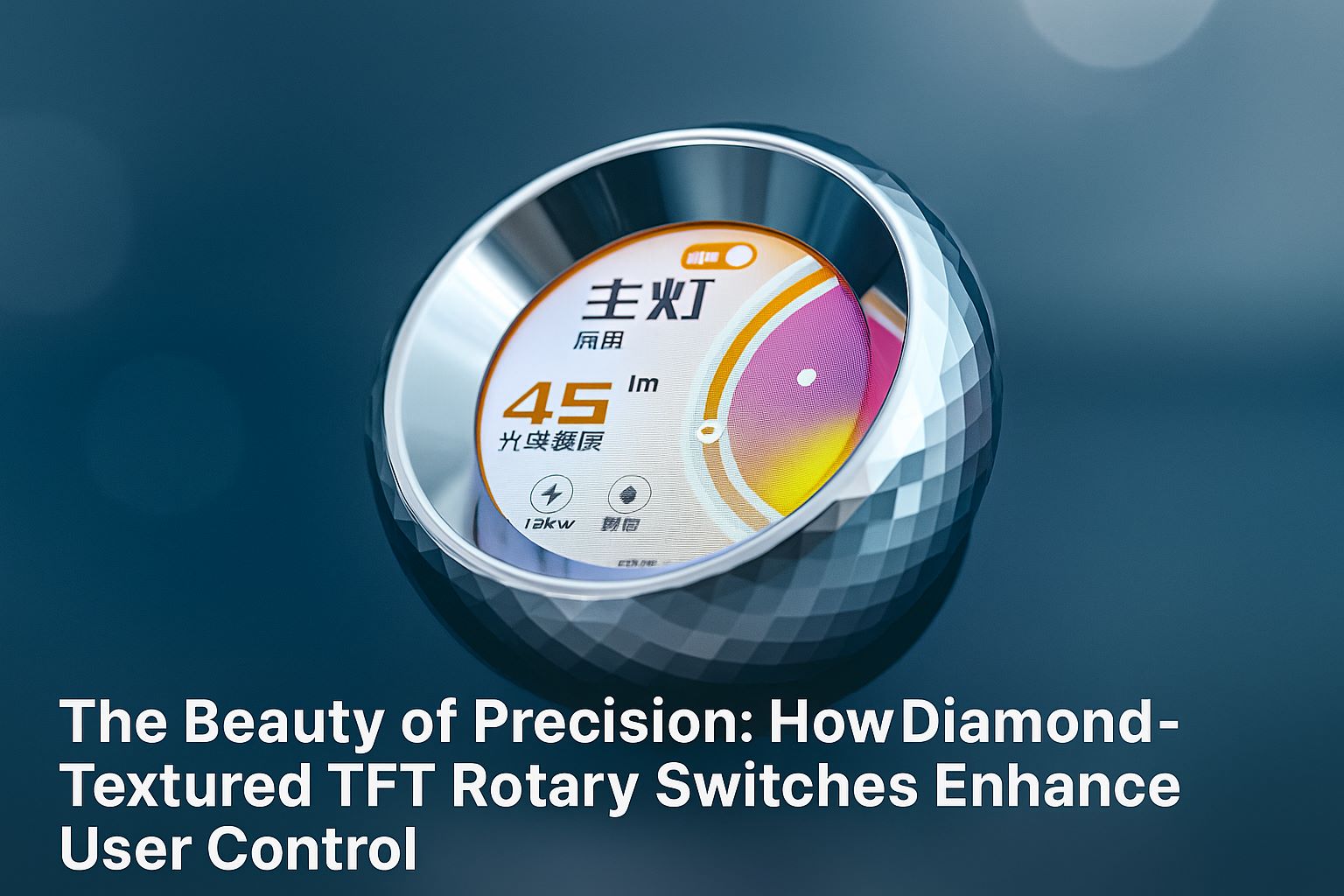Modern electronic interfaces demand more than just functionality. They require intuitive operation, precise feedback, and long-term reliability. In this context, diamond-textured TFT rotary switches have emerged as a key innovation in user interface hardware. Combining functional excellence with tactile elegance, these components are now widely used across industries such as automotive, aerospace, medical devices, and industrial automation.
The Evolution of Rotary Switches in High-Precision Interfaces
Rotary switches have long played a critical role in precision control. Traditionally, these components offered limited tactile variation. However, with the rise of complex interface design and consumer expectations, demands have shifted. Users now expect enhanced grip, feedback, and aesthetics. This is where TFT rotary switches with diamond texture come in—setting a new standard for precision components.
What Is a Diamond-Textured TFT Rotary Switch?
A diamond-textured rotary switch integrates tactile surface engineering into a TFT (Thin-Film Transistor) controlled rotary system. The diamond pattern refers to a micro-engineered surface with interlocking ridges. These patterns are not just decorative—they significantly increase friction and thus control accuracy.
Furthermore, because these switches interface with TFT displays, users get both physical haptics and visual feedback, improving user interaction across multiple senses. This is especially important in mission-critical environments where split-second adjustments are vital.
1. Anti-Slip Performance: Control That Responds Instantly
One of the key benefits of diamond texture is its anti-slip surface. Even in humid or oily conditions, users can rotate the switch confidently. This ensures uninterrupted control in medical instruments, aviation cockpits, or vehicle infotainment systems.
Tests have shown that rotary switches with diamond surfaces reduce slippage by over 40% compared to flat or rubberized knobs. This makes them ideal for users wearing gloves or working in high-motion environments.
2. Improved Accuracy and Feedback: Every Degree Matters
Precision often comes down to tactile feedback. When users turn a switch, they rely on both resistance and feel to confirm action. The diamond pattern provides subtle resistance at the fingertip, making over-rotation or missed detents far less likely.
Moreover, when paired with digital feedback from a TFT display, the rotary switch becomes a hybrid controller. Users get immediate confirmation via display and touch, minimizing operational errors. This dual-mode interface is especially valuable in diagnostic devices, measurement instruments, and professional-grade audio equipment.
3. Aesthetic Design: Where Function Meets Form
Today’s devices must also look and feel premium. Diamond-textured rotary switches add a refined industrial look. The surface pattern reflects light in complex ways, giving it a matte-gloss hybrid finish.
Designers appreciate how these components can match brand aesthetics while also enhancing functional usability. In sectors such as luxury automotive interiors or consumer electronics, where touchpoints define brand experience, this becomes a major competitive advantage.
4. Ergonomics and Long-Term Comfort
Beyond performance, user comfort is essential, especially for interfaces used frequently or for long periods. The ergonomic edge design of diamond-textured switches reduces finger fatigue. The textured grip means less force is needed to operate the switch, which translates into better long-term comfort.
This is particularly important in sectors such as medical diagnostics, where technicians may need to make dozens of fine adjustments in a single session.
5. Durability and Material Integrity
Not only do these switches perform well, but they also last longer. The diamond-textured surface is usually applied through CNC machining, laser engraving, or precision molding, depending on the substrate. As a result, the surface resists wear, corrosion, and environmental damage.
In field tests, these switches retained surface integrity after 100,000+ rotations, far exceeding standard tactile knobs. This durability ensures reduced maintenance and lower total cost of ownership—a critical factor for bulk procurement.
6. Applications Across Industries: Adaptable Precision
While originally used in industrial systems, these switches have found homes in:
- Automotive dashboards and EV interfaces
- Professional sound mixers and recording consoles
- Medical diagnostic panels
- High-end consumer electronics
- Aerospace and defense controls
Because the diamond texture can be customized, different industries can request specific pattern depths or profiles depending on user needs. This flexibility makes them ideal for OEMs seeking both standardization and differentiation.
7. Integration with Touch + Display Ecosystems
A defining advantage of TFT rotary switches is their seamless integration with modern HMI systems. Many newer control panels combine rotary input with touchscreen displays and programmable LEDs.
By incorporating diamond-textured rotary knobs into such systems, engineers enhance both control fidelity and user experience. Furthermore, with backlit options and capacitive detection, these switches become even more adaptable for low-light or precision-critical applications.
Conclusion: Precision that Users Can Feel
In an age where interaction defines product experience, diamond-textured TFT rotary switches offer unmatched value. They enhance grip, elevate visual design, and support next-gen control systems. More importantly, they bridge the gap between tactile feel and digital accuracy, empowering users with confidence in every turn.
From industrial automation to luxury automotive, from aviation to audio, these components represent the future of human-machine interaction. As designers and engineers continue pushing the boundaries of interface technology, such switches will remain central to that evolution.






